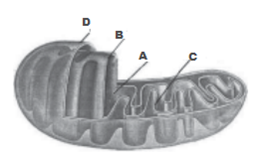 Multiple Choice Questions
Multiple Choice QuestionsSelect the correct matching in the following pairs
Smooth ER — Oxidation of phospholipids
Smooth ER — Synthesis of lipids
Rough ER — Synthesis of glycogen
Rough ER — Synthesis of glycogen
Which one of the following is not an inclusion body found in prokaryotes?
Phosphate granule
Cyanophycean granule
Glycogen granule
Glycogen granule
Transmission tissue is characteristic feature of
hollow style
solid style
dry stigma
dry stigma
Nuclear envelope is derivative of
smooth endoplasmic reticulum
membrane of Golgi complex
microtubules
microtubules
Important site for formation of glycoproteins and glycolipids is
Golgi apparatus
plastid
lysosome
lysosome
In mitochondria, protons accumulate in the
outer membrane
inner membrane
intermembrane space
intermembrane space
C.
intermembrane space
During the passage of two electrons from one an electron carrier (NADH) to another on ETC, enough energy is liberated that pumps out three pairs of protons (H+) from the matrix (inner chamber) to the outer chamber (intermembrane space) of mitochondria.The accumulation of protons in intermembrane space results in their higher concentration than in the matrix creating a proton gradient (ΔpH) and electric potential across the membrane.
Which one of the following is not considered as a part of the endomembrane system?
Golgi complex
Peroxisome
Vacuole
Vacuole
The figure below shows the structure of a mitochondrion with its four parts labelled (A), (B), (C) and (D). Select the part correctly matched with its function
D - outer membrane -gives - rise to inner membrane by splitting
B - Inner membrane - forms infolding called cristae
C - Cristae - possess single circular DNA molecule and ribosomes
C - Cristae - possess single circular DNA molecule and ribosomes
